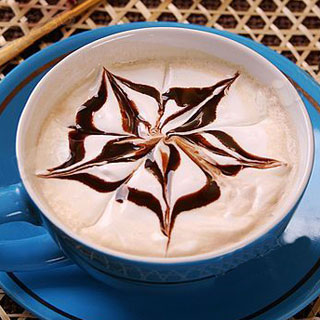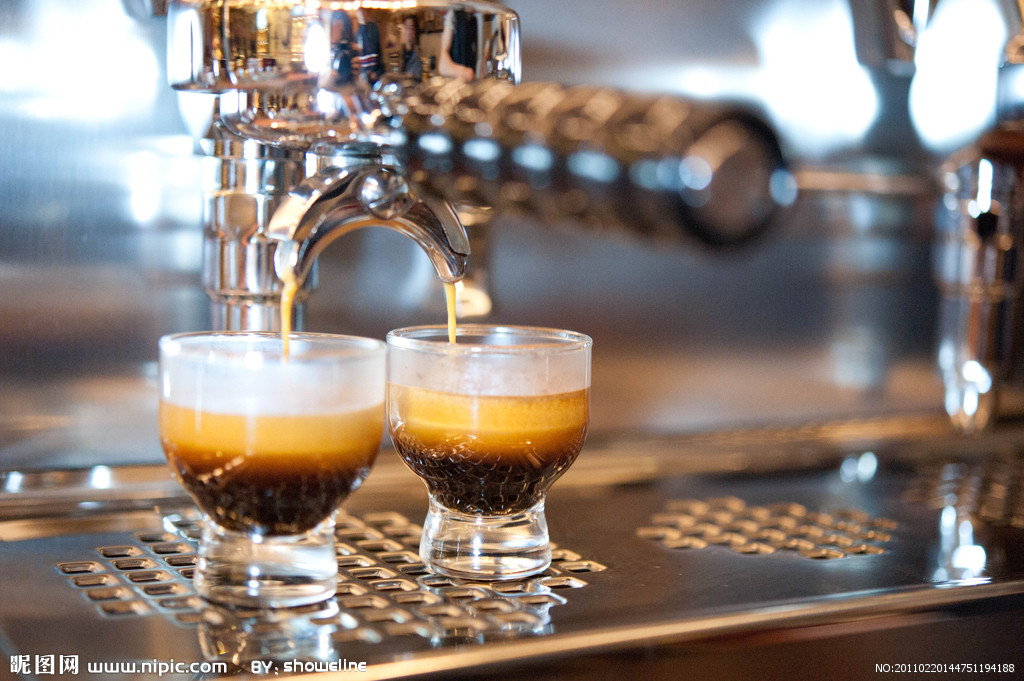A comprehensive analysis of mocha coffee the difference between single mocha coffee and Italian mocha coffee
In 575 AD, the first coffee bean took root on the other side of the Red Sea in Yemen, far from its hometown of Ethiopia. It was transformed into "mocha" coffee, and it started the coffee business all over the world.
What is "mocha"? There are many kinds of answers. Some people say that mocha refers to the place of origin. Some people say that mocha refers to sweet chocolate coffee.
In fact, both views are biased. Authentic mocha coffee is only produced in the Republic of Yemen in the southwest of the Arabian Peninsula. It is produced on a steep hillside with an elevation of 900 to 2400 meters above sea level. More than 500 years ago, Yemen produced coffee in the oldest way. In the early 17th century, the first Yemeni coffee sold to Europe was exported through the port of Mocha, an ancient small port there. Unexpectedly, the delicacy of coffee impressed Europeans. As a result, they call the delicious coffee shipped from the port of Mocha "mocha coffee", which is the origin of the term "mocha coffee".
Ethiopia and Yemen are across the Red Sea, and their coffee is often exported through the port of Mocha. As a result, Ethiopian sun-treated coffee is often referred to as mocha, such as Mocha Haral. The old port of Mocha has long been abandoned due to sediment deposition. Its current place name is almakha.
Perhaps because the deep-roasted Yemeni coffee is often as bitter and sweet as chocolate, today many people will add chocolate sauce to the fancy coffee also known as "mocha".
Therefore, when you see the word "mocha coffee", you should understand three concepts.
1. Single mocha coffee grown in Yemen in Asia
two。 Ethiopia, export coffee from the port of Mocha
3. Fancy coffee flavored with chocolate sauce
In any case, for picky coffee experts, only real Yemeni coffee is qualified to be called "mocha". The spelling of mocha is also varied. Moka, Moca and Mocca are all common spellings. However, there are four other spellings for Yemeni coffee sacks and documents:
Mokha, Makha, Morkha, Mukha, although spelled differently, all represent the same meaning. The Yemeni mocha is the founder of the world coffee trade, and it has played an important role in promoting delicious coffee to the world. Nowadays, mocha coffee has long been familiar to people, but to be honest, not many people know that today's "mocha" has so deep roots with the bustling port where ships came and sailed before the 18th century. Mocha coffee in many cafes is probably the most popular coffee for girls because of its deep chocolate and milk flavor. Most people who know anything about coffee will think that it just adds chocolate to the latte. There is nothing wrong with this statement, but it is not entirely true.
There are not many people who can drink authentic "mocha". I'm afraid that authentic mocha is not easy for girls to fall in love with right away. In addition to its natural chocolate aftertaste, it is spicy, exciting and even has a strong aroma of wine is the other side of it that is not gentle.
One of the characteristics of Yemeni mocha beans is its high acidity, which is indescribably spicy, which naturally makes the mocha coffee here very exciting, even reminiscent of the heroic feeling of drinking spirits, but the very wonderful thing is that mocha coffee also has a chocolate aftertaste, which naturally reminds people that its way of making it is to add chocolate to the coffee.
Its latter feature has flourished in the increasingly civilized business world, and today, mocha coffee in most cafes does not use Yemeni mocha beans, but only coffee with chocolate sauce. Because of this, the "variety" mocha has become the "production method" mocha. At the same time, the low production of Yemeni mocha beans also makes it a patent for a few "aristocrats" to show their taste. Mocha beans have a small average grain, with a wild and spicy flavor of ginger, a bright and unique taste, and a pleasant fruit acidity. With a rich wine-like texture. For this reason, it is known as "Bordeaux wine in coffee".

Source: Brista blog
Important Notice :
前街咖啡 FrontStreet Coffee has moved to new addredd:
FrontStreet Coffee Address: 315,Donghua East Road,GuangZhou
Tel:020 38364473
- Prev

Five rumors about coffee legends correctly understand coffee and read coffee
Espresso coffee contains more caffeine than drip coffee. Considering the small portion characteristics of Espresso coffee, it may contain more caffeine than drip coffee. But in fact, the two kinds of coffee are only relatively comparable, and the caffeine content of coffee depends on the variety of coffee, the degree and level of coffee roasting and the brewing technology. USDA data show that 2o
- Next

The course of Italian Coffee: how to make Coffee Milk foam (explained in picture and text)
Coffee flower, is one of the signature skills of baristas, a perfect cup of cappuccino, Latte Art, mocha works, the presentation of flowers give the beauty of coffee, give guests and baristas themselves are pleasant. When talking about the importance of milk selection and application when making delicious Cappuccino and Latte Art in coffee teaching, the principle of milk foaming is discussed.
Related
- What is the meaning of lactic acid fermentation with coffee bean treatment?
- How to judge the state of foam by sound?
- How does the latte pull out the unicorn pattern? Come to get for a little trick to improve the flower pull!
- Will flower pulling affect the taste of the latte?
- Do you know the history of coffee?
- The difference between honey treatment and sun washing what is raisin honey treatment?
- What kind of milk can a novice use to make coffee foam to keep the foam longer? The correct method and skills of milking tutorial sharing
- Why do washed coffee beans taste sour? Flavor characteristics of washed Coffee
- Introduction to the skill of how to practice the size and height of water injection around the circle of hand-brewed coffee
- How do beginners practice coffee flower drawing from scratch?

